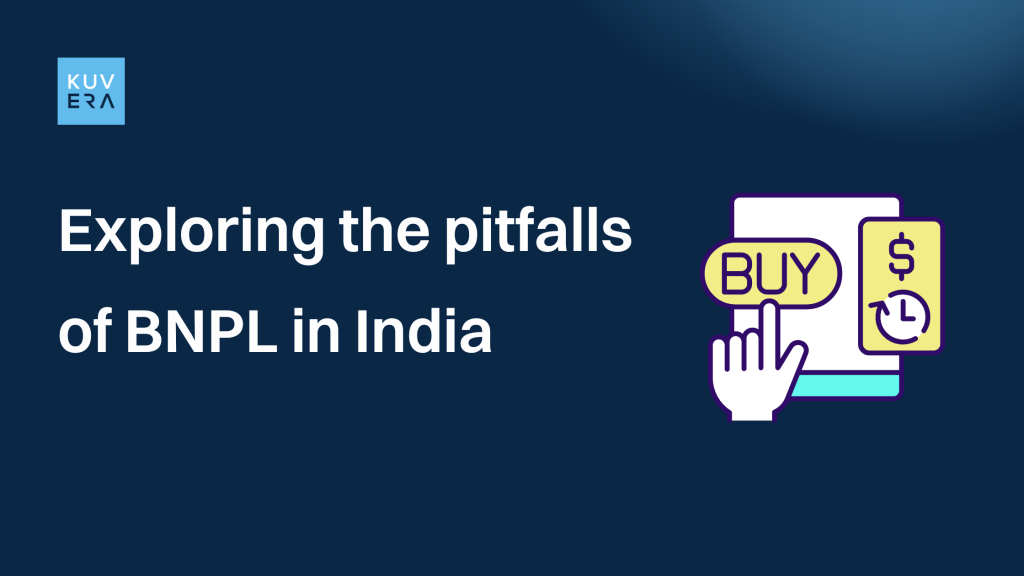“Buy Now, Pay Later” (BNPL) is a financial service that lets you purchase items immediately but pay for them over time. When you choose BNPL at checkout, instead of paying the full price upfront, you’re given the option to split the cost into smaller, more manageable payments. These payments are often spread out over a few weeks or months, sometimes without interest or additional fees, as long as you pay on time. This service provides a way to buy what you need or want now without waiting until you have enough money saved up.
In recent years, the “Buy Now, Pay Later” (BNPL) model has gained significant traction in India, offering consumers the seemingly attractive option to purchase goods immediately and defer payment to a later date. While this approach can provide short-term financial relief and instant gratification, it’s not without its pitfalls. Today we will take a look at why BNPL might not be the best choice for Indian consumers, backed by data and an in-depth analysis.
BNPL services allow consumers to make purchases without immediate payment, splitting the total cost into smaller, more manageable installments. While it appears to offer a win-win situation, the reality can be quite different, especially when consumers fail to meet payment deadlines.
“Buy Now, Pay Later” (BNPL) is becoming very popular in India, growing really fast. Right now, it’s worth between $3-3.5 billion (about Rs 22,500-26,250 crore), and experts think it will grow to $45-50 billion (Rs 3.37-3.75 lakh crore) by 2026. This shows that BNPL is quickly becoming a big deal, challenging the usual ways people borrow money, like personal loans and credit cards.
The main reason for this change is because many people in India, who shop online, don’t have access to traditional credit like credit cards. Right now, there are 67 million credit card users, but the online shopping crowd is much bigger—250 million and expected to grow to 500-600 million soon. This large group of online shoppers is exactly who BNPL is aiming to help, offering them a new way to buy now and pay later.
The Hidden Costs and Risks
- Interest Rates and Late Fees: Although BNPL providers advertise zero or low-interest rates, late payments can incur hefty fees. A study by the Reserve Bank of India indicates that failure to meet the deadlines can lead to interest rates as high as 30-40% annually, far exceeding conventional credit options.
- Debt Accumulation: The ease of using BNPL can lead to impulsive buying, accumulating debt that can become unmanageable. According to a survey by a leading financial advisory firm in India, 60% of BNPL users admitted to spending more than they could afford, leading to a cycle of debt.
- Impact on Credit Score: Many consumers are unaware that late or missed payments through BNPL schemes can affect their credit score. A report from Credit Information Bureau India Limited (CIBIL) highlighted that approximately 20% of BNPL users saw a decline in their credit score, affecting their ability to secure loans in the future.
- Regulatory Concerns: The BNPL sector in India is still relatively unregulated, leading to practices that may not always be in the consumer’s best interest. The lack of clear guidelines can result in hidden charges and terms that are not fully transparent.
The Psychological Trap
BNPL schemes can exploit psychological biases, encouraging spending on non-essential items. The instant gratification coupled with deferred payment can cloud judgement, leading to financial decisions that may not align with one’s long-term interests.
The Cost of Convenience
While BNPL offers convenience, this comes at a cost. The ease of access to credit through mobile apps and online platforms can lead to over-leverage among consumers, particularly those who lack financial literacy. This convenience can often mask the true cost of purchases, making it easier for consumers to overlook the long-term financial implications.
Alternatives to BNPL
- Saving and Budgeting: The traditional approach of saving for a purchase ensures that consumers live within their means, avoiding the trap of debt.
- Credit Cards: When used responsibly, credit cards offer a more regulated form of credit, with additional benefits such as reward points and consumer protection.
- Personal Loans: For larger purchases, personal loans may offer lower interest rates compared to the cumulative cost of BNPL schemes, especially for consumers with good credit scores.
To mitigate the risks associated with BNPL, both consumers and regulators need to take proactive steps. Consumers should exercise caution, fully understanding the terms and conditions before opting for BNPL.
Conclusion
The “Buy Now, Pay Later” model, while offering immediate convenience, carries hidden risks that can lead to long-term financial strain. In the Indian context, where digital finance is rapidly evolving, it’s crucial for consumers to approach BNPL with caution, armed with knowledge and an understanding of the potential pitfalls. As the market continues to grow, consumer education and regulatory oversight will be key in ensuring that BNPL serves as a beneficial financial tool rather than a debt trap.
Interested in how we think about the markets?
Read more: Zen And The Art Of Investing
Watch/hear on YouTube:
Start investing through a platform that brings goal planning and investing to your fingertips. Visit kuvera.in to discover Direct Plans and Fixed Deposits and start investing today.

